

| A modern Atlas of Nottinghamshire Centipedes | ||
| Despite their great abundance, Centipedes (Chilopoda) have remained largely neglected in terms of their identification and study in Nottinghamshire and until only recently, there was very little information available regarding any of the county's species. | ||
| ..... |
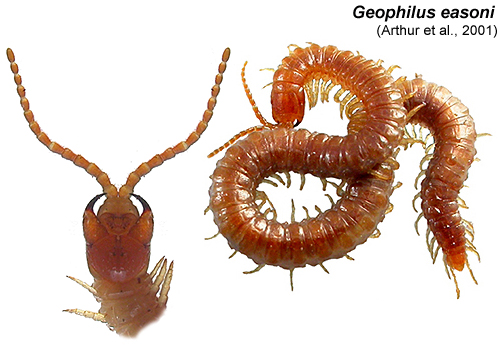 |
But thanks to Tony Barber
of the British Myriapod and Isopod Group, it is now
possible for us to produce and publish yet another (fourth) edition of
our
modern atlas of Nottinghamshire Centipedes, published as a pdf file in
December 2022. Tony was kind enough to send us all the VC56 records which the BMIG held. Many were Tony's own records from his time living in Bingham, but P.E. Jones also did a great deal of recording in the same area of the county and at around the same time. Records sent to us by the BMIG, coupled with those of other local naturalists and ourselves, means that we now have a continually improving idea of species distribution and status in Nottinghamshire, which is probably much better than many other Midland counties. Centipede distribution does tend to reflect recorder location, so the distribution of some species can be quite patchy and not wholly representative of their distribution. |
|
| ..... | ||
| Nottinghamshire
records of Geophilus carpophagus Only recently recorded from Nottinghamshire (Sookholme Church in April 2015 and near Kirton in May 2016), Geophilus carpophagus has frequently been confused with Geophilus easoni in the past, and only recently have the two been considered to be separate species (Arthur, et al 2001). There is a previous record from Bunny Old Wood, but the recorder is unknown and there was no retained specimen. Geophilus carpophagus is not a woodland species, favouring more urban locations, where it can be found under loose mortar and brickwork on the walls of buildings etc. |
||
| ..... |
| A current
checklist of Nottinghamshire Centipedes It is likely that most species listed as having occurred in Nottinghamshire are still present and widely distributed, its just that few recorders are regularly looking for them. On a cold, wet day in early March 2013, we brought home a carrier bag of leaf litter and moss collected at Sherwood Forest CP and promptly found Nottinghamshire's first record of Lithobius muticus. Keith and Belinda Lugg also recorded Nottinghamshire's first Cryptops anomalans from the grounds of Worksop Priory in August 2015, so there is little doubt that new species for the county are waiting to be found, even in suburban localities such as parks, gardens and Churchyards. As if to illustrate the likelihood of new species having the potential to turn up anywhere, Richard Jones recently discovered the House Centipede (Scutigera coleoptrata) indoors at Upton in January 2024. |
| ..... |
| HIMANTARIIDAE |
| Haplophilus subterraneus (Shaw, 1789) |
| ..... |
| SCHENDYLIDAE |
| Schendyla nemorensis (C.L. Koch, 1837) |
| ..... |
| LINOTAENIIDAE |
| Strigamia acuminata (Leach, 1814) |
| .......... |
| GEOPHILIDAE |
| Geophilus carpophagus (Leach, 1814) |
| Geophilus easoni (Arthur et al., 2001) |
| Geophilus electricus (Linné, 1758) |
| Geophilus flavus (De Geer, 1778) |
| Geophilus insculptus (Attems, 1895 & Dagger) |
| Geophilus truncorum (Bergsoë & Meinert, 1886) |
| ..... |
| CRYPTOPSIDAE |
| Cryptops anomalans (Newport, 1844) |
| Cryptops hortensis (Donovan, 1810) |
| ..... |
| LITHOBIIDAE |
| Lithobius calcaratus (C.L. Koch, 1844) |
| Lithobius curtipes (C.L. Koch, 1847) |
| Lithobius calcaratus (C.L. Koch, 1844) |
| Lithobius forficatus (Linné, 1758) |
| Lithobius melanops (Newport, 1835) |
| Lithobius microps (Meinert, 1868) |
| Lithobius muticus (C.L. Koch, 1847) |
| Lithobius variegatus (Leach, 1814) |
| ..... |
| HENICOPIDAE |
| Lamyctes emarginatus (Newport 1844) |
| SCUTIGERIDAE |
| Scutigera coleoptrata (Linnaeus, 1758) |
| The
Nottinghamshire distribution maps The distribution maps are largely built from the records of Tony Barber, P.E. Jones and ourselves. We have avoided using historical records sourced from J.W. Carr's book The Invertebrate Fauna of Nottinghamshire", feeling that a modern atlas is more representative of the current distribution of our Centipede fauna and far more useful. The maps are up to date, as of December 2022. For more up to date species accounts, download the fourth edition of the modern Atlas of Nottinghamshire Centipedes. Link at bottom of page. |
| CHILOPODA - GEOPHILOMORPHA - Himantariidae - Haplophilus subterraneus | CHILOPODA - GEOPHILOMORPHA - Schendylidae - Schendyla nemorensis | |
| Haplophilus subterraneus (Shaw, 1789) | Schendyla nemorensis (C.L. Koch, 1837) | |
| Nottinghamshire distribution: Considerably more widespread across much of Nottinghamshire. Frequent in gardens, where it is sometimes found deep within the soil, but more regularly under large stones. | Nottinghamshire distribution: The distribution map suggests that this species has a southerly distribution in Nottinghamshire. Regularly recorded from the Bingham area (Jones, P.E.) in the late 1960's and 1970's. Two records from Market Warsop in 2014 and 2017, represent the most northerly county records. | |
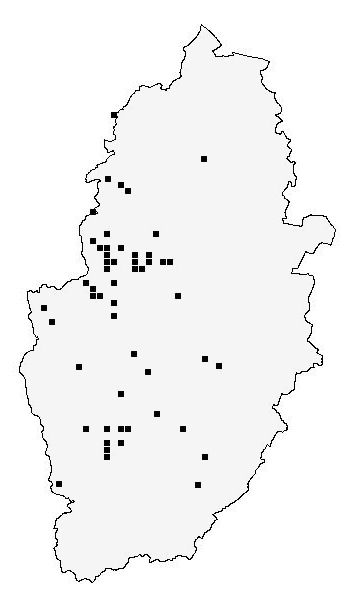 |
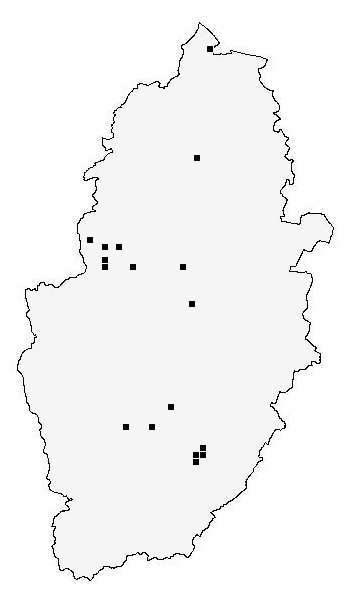 |
|
| CHILOPODA - GEOPHILOMORPHA - Lintotaeniidae - Strigamia acuminata | CHILOPODA - GEOPHILOMORPHA - Geophilidae - Geophilus carpophagus | |
| Strigamia acuminata (Leach, 1814) | Geophilus carpophagus (Leach, 1814) | |
| Nottinghamshire distribution: Uncommon. Most records are from the south-east of Nottinghamshire, but there is a recent record from Eaton Wood in 2013 (Pendleton, T.A. and Pendleton, D.T). | Nottinghamshire distribution: Geophilus carpophagus favours more urban locations, where it can be found underneath loose mortar and brickwork on the walls of buildings etc. Likely to be quite widespread in Nottinghamshire, but confirmed records known only from the walls of Sookholme Church in April 2015 and near Kirton in May 2016 (Pendleton, T.A. and Pendleton, D.T). | |
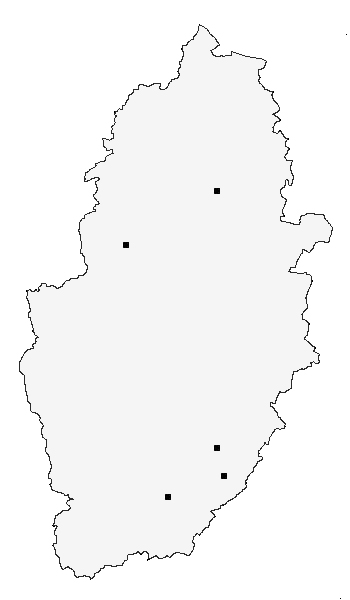 |
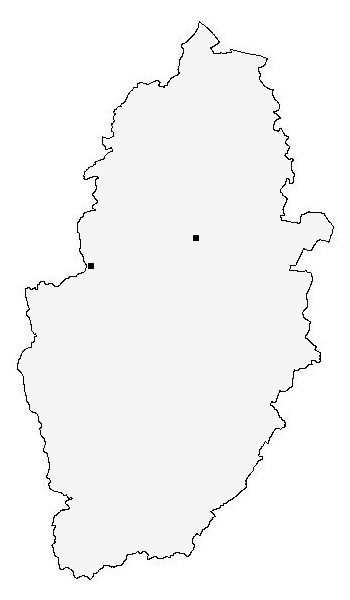 |
|
| CHILOPODA - GEOPHILOMORPHA - Geophilidae - Geophilus easoni | CHILOPODA - GEOPHILOMORPHA - Geophilidae - Geophilus electricus | |
| Geophilus easoni (Arthur et al., 2001) | Geophilus electricus (Linné, 1758) | |
| Nottinghamshire distribution: Widespread and often common at many lowland heath and woodland sites in central Nottinghamshire. We have no records from urban locations. | Nottinghamshire distribution: For many years, Nottinghamshire's only record was from Bingham in 1968 (Jones, P.E.) but it was more recently recorded from Attenborough NR in November 2016 (Sexton, T.). | |
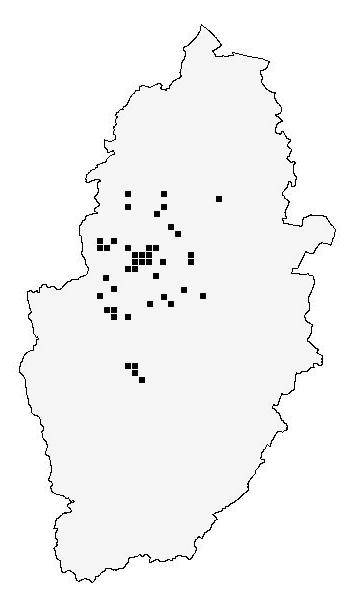 |
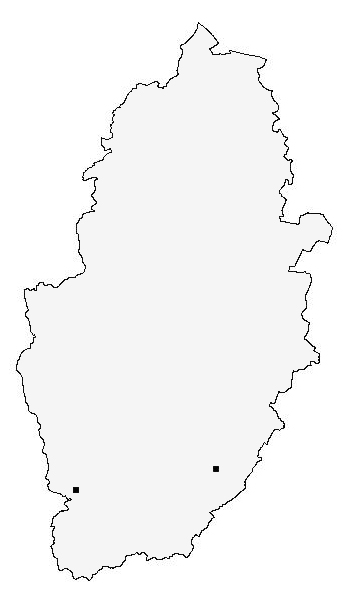 |
|
| CHILOPODA - GEOPHILOMORPHA - Geophilidae - Geophilus flavus | CHILOPODA - GEOPHILOMORPHA - Geophilidae - Geophilus insculptus | |
| Geophilus flavus (De Geer, 1778) | Geophilus insculptus (Attems, 1895 & Dagger) | |
| Nottinghamshire distribution: Most common in the south-east of the county, with records from Newark in 1969 and 1970 (Jones, P.E.). More recent recording work has turned up records from Sherwood Forest, Kirton Wood and Wellow Park. (Pendleton, T.A. and Pendleton, D.T) | Nottinghamshire distribution: Common and found in a wide variety of habitats. Well recorded from many sites in the Bingham and Trent Valley areas during the late 1960's and early 1970's, and now proving to be more widely distributed than previously thought. | |
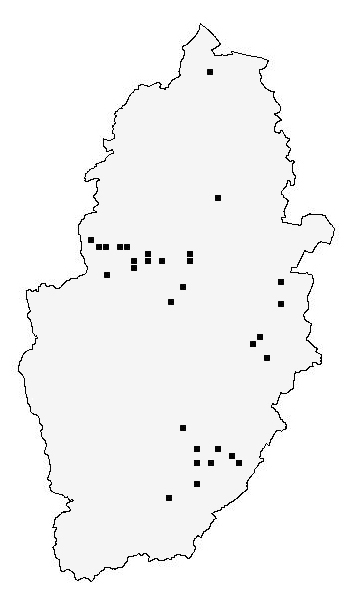 |
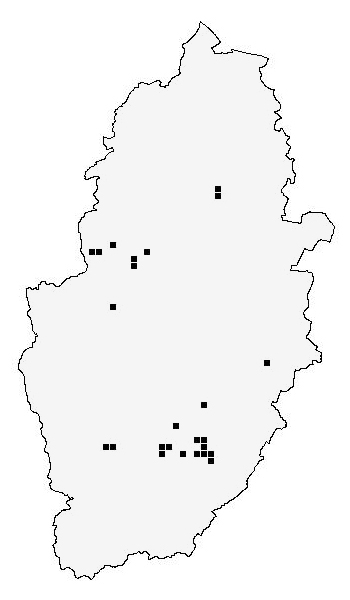 |
|
| CHILOPODA - GEOPHILOMORPHA - Geophilidae - Geophilus truncorum | CHILOPODA - SCOLOPENDROMORPHA - Cryptopsidae - Cryptops anomalans | |
| Geophilus truncorum (Bergsoë & Meinert, 1886) | Cryptops anomalans (Newport, 1844) | |
| Nottinghamshire distribution: Common and widespread. Most often recorded from north of Nottingham, towards the Sherwood Forest area. Most of the known records are from sites lying on sandy soils. | Nottinghamshire distribution: A single specimen found in the grounds of Worksop Priory on 22/08/15 (Lugg, K. and Lugg, B.) represented the first Nottinghamshire record. It was subsequently found at the same site the following year (Pendleton, T.A. and Pendleton, D.T), but has yet to be found elsewhere in the county. | |
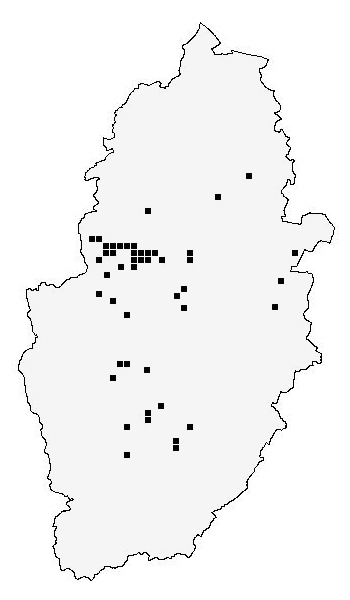 |
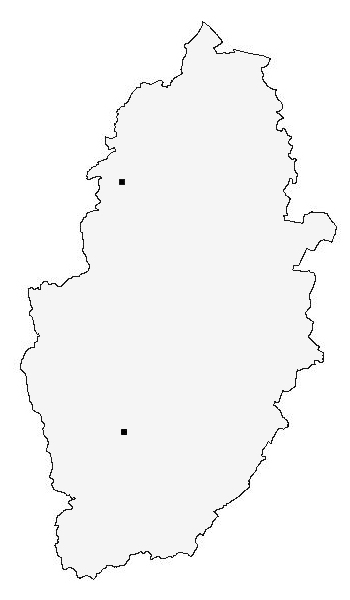 |
|
| CHILOPODA - SCOLOPENDROMORPHA - Cryptopsidae - Cryptops hortensis | CHILOPODA - LITHOBIOMORPHA - Lithobiidae - Lithobius calceratus | |
| Cryptops hortensis (Donovan, 1810) | Lithobius calcaratus (C.L. Koch, 1844) | |
| Nottinghamshire distribution: Most frequent around the Mansfield area, but probably widespread across much of Nottinghamshire. It can be found under stones and other debris, often on brownfield sites and in suburban gardens. Also well recorded from the Bingham area. | Nottinghamshire distribution: Recent records have come from heathland sites in the Sherwood Forest area, including Clipstone Old Quarter, Sherwood Heath SSSI near Ollerton and Strawberry Hill Heath near Mansfield (Pendleton, T.A. and Pendleton, D.T). There is a 1983 record from Bunny Old Wood in the south of the county. | |
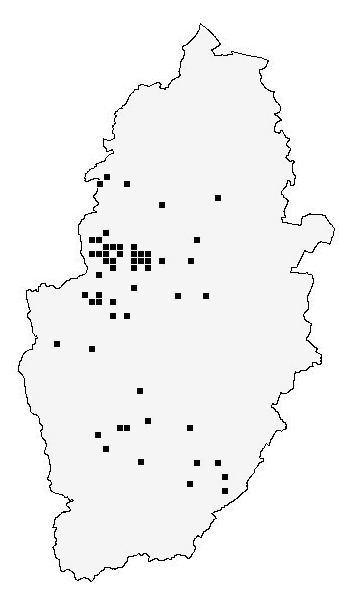 |
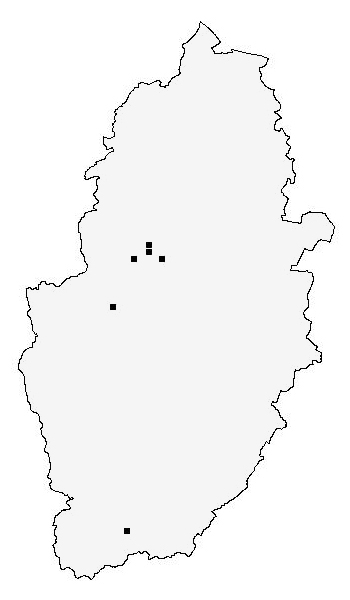 |
|
| CHILOPODA - LITHOBIOMORPHA - Lithobiidae - Lithobius curtipes | CHILOPODA - LITHOBIOMORPHA - Lithobiidae - Lithobius crassipes | |
| Lithobius curtipes (C.L. Koch, 1847) | Lithobius crassipes (L. Koch, 1862) | |
| Nottinghamshire distribution: Must be considered to be rare in Nottinghamshire, as it was never recorded from the Bingham area, or anywhere along the Trent Valley by Barber, A. and Jones, P.E. in the late 1960's and early 1070's. There is a single record from Bunny Old Wood dated 1983, although the recorder is unknown. | Nottinghamshire distribution: Probably much more common and widespread than the distribution map suggests. Well recorded from the Bingham area of south-east Nottinghamshire in the late 1960's and early 1070's (Barber, A. and Jones, P.E.) but frequent in the Mansfield and Sherwood Forest areas. | |
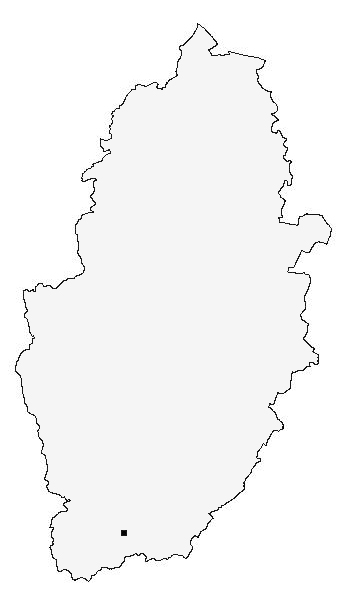 |
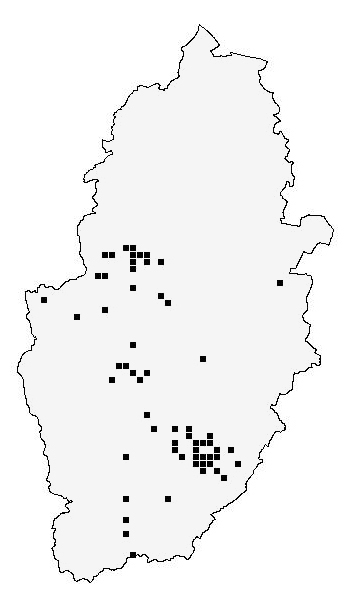 |
|
| CHILOPODA - LITHOBIOMORPHA - Lithobiidae - Lithobius forficatus | CHILOPODA - LITHOBIOMORPHA - Lithobiidae - Lithobius melanops | |
| Lithobius forficatus (Linné, 1758) | Lithobius melanops (Newport, 1835) | |
| Nottinghamshire distribution: The most widespread of all the Lithobius Centipedes in Nottinghamshire. There are obvious concentrations of records from the Bingham and Sherwood Forest areas of the county, which have seen most recording. Frequently found in urban gardens. | Nottinghamshire distribution: Relatively scarce in Nottinghamshire, but probably suffering from under-recording. There is a band of records running south-east to north-west across the county. | |
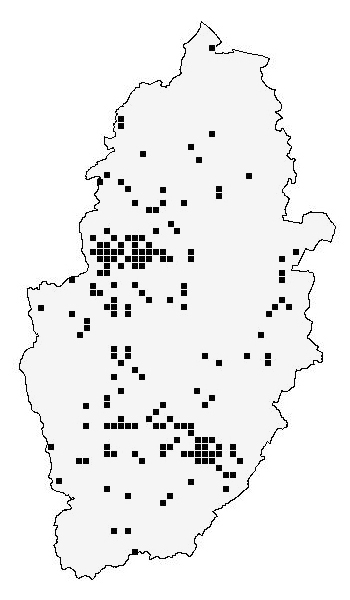 |
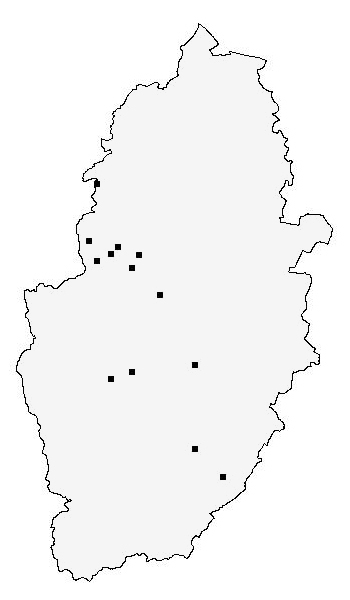 |
|
| CHILOPODA - LITHOBIOMORPHA - Lithobiidae - Lithobius microps | CHILOPODA - LITHOBIOMORPHA - Lithobiidae - Lithobius muticus | |
| Lithobius microps (Meinert, 1868) | Lithobius muticus (C.L. Koch, 1847) | |
| Nottinghamshire distribution: Once known only from the south of the county, but with regular recording, is turning out to be much more widespread than previously thought. Nationally, this is a common Lithobius, often found in urban locations. | Nottinghamshire distribution: Rare and restricted with the only county records coming from grass tussock samples taken from Budby South Forest and Sherwood Forest CP in early 2013. (Pendleton, T.A. and Pendleton, D.T) | |
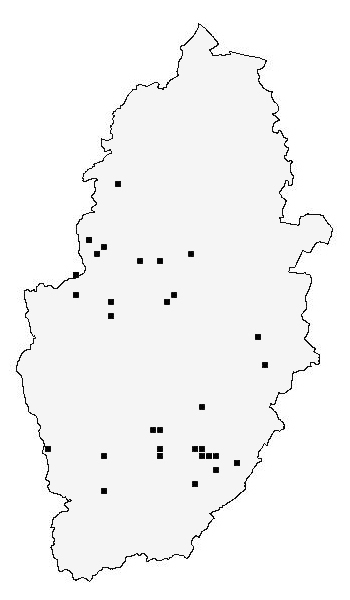 |
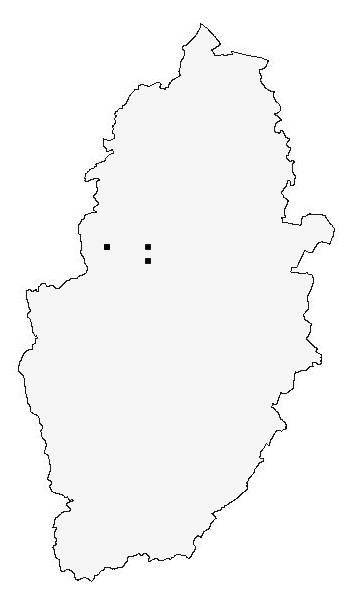 |
|
| CHILOPODA - LITHOBIOMORPHA - Lithobiidae - Lithobius variegatus | CHILOPODA - LITHOBIOMORPHA - Henicopidae - Lamyctes emarginatus | |
| Lithobius variegatus (Leach, 1814) | Lamyctes emarginatus (Newport 1844) | |
| Nottinghamshire distribution: Not as common as the more familiar Lithobius forficatus, but there have been numerous records in recent years. Records are predominantly from woodlands lying on sandy soil, where it can be found under logs etc. | Nottinghamshire distribution: The only Nottinghamshire records currently, are from Bingham in 1968 (Jones, P.E.) and from Ploughman Wood in 1998 (Kirby, P.). | |
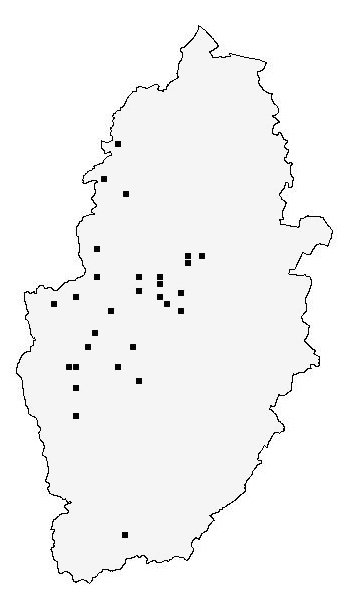 |
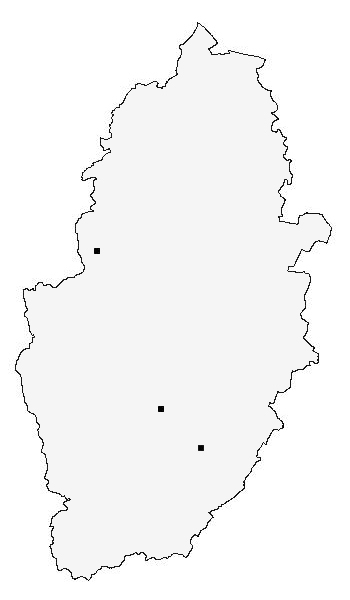 |
|
| CHILOPODA - SCUTIGEROMORPHA - Scutigeridae - Scutigera coleoptrata | ||
| Scutigera coleoptrata (Linnaeus, 1758) | ||
| Very rare and will usually be recorded indoors. Nottinghamshire's first officially documented record of Scutigera coleoptrata, turned up in the house of Richard Jones, in the village of Upton near Southwell in January 2024, but there was an unsubmitted claim of Scutigera coleoptrata from Gedling in 2010. | ||
 |
||